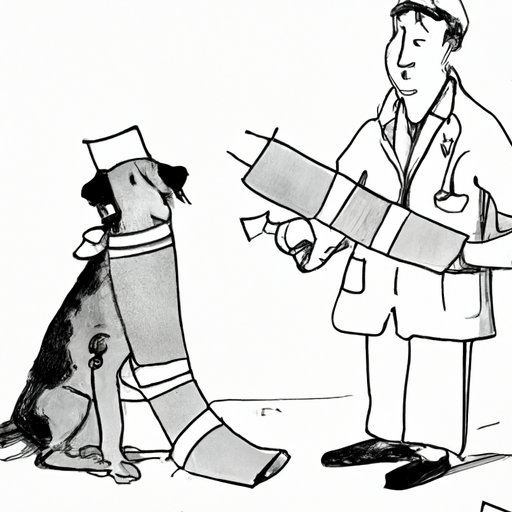Introduction
Walking down the street, your furry friend suddenly yelps and begins limping. You quickly realize they’ve sprained their leg. As a caregiver, you’re naturally inclined to help, but you’re unsure of the steps to take. Don’t panic, we’re here to guide you through the process of bandaging your dog’s sprained leg.
Recognizing a sprain
Before you grab your bandages, it’s essential to understand what a sprained leg in a dog looks like. Your dog may exhibit:
- Limping
- Swelling in the leg
- Whining or other signs of pain
- Reluctance to put weight on the leg
If your dog is showing these signs, they may have a sprain. However, it’s crucial to consult with a vet to ensure proper treatment is provided.
Gathering Supplies
To wrap your dog’s leg, you will need:
- Non-adhesive bandages
- Adhesive bandages
- A plastic bag or cling film (to protect the bandage when your dog goes outside)
- A pair of scissors
Ensure these are at hand before you begin the process.
Wrapping the Sprained Leg
Now that you have recognized the sprain and gathered your supplies, you can move on to the actual wrapping process.
Step 1: Place the Non-adhesive Bandage
Start by gently placing the non-adhesive bandage around the sprained leg. This acts as a cushion and prevents the adhesive bandage from sticking to your dog’s fur.
Step 2: Secure with Adhesive Bandage
Next, secure the non-adhesive bandage with an adhesive bandage. Be sure not to wrap it too tight as this can cut off circulation.
Step 3: Protect the Bandage
Lastly, when your dog needs to go outside, protect the bandage with a plastic bag or cling film to keep it dry and clean.
Maintaining the Bandage
After wrapping the leg, it’s essential to keep the bandage clean and dry. Check the bandage daily for any signs of infection, such as swelling, redness, or unusual odors. If you notice these, contact your vet immediately.
FAQs
Q: How tight should I wrap the bandage?
A: The bandage should be snug, but not too tight. If your dog’s toes become swollen or cold, it’s too tight.
Q: How often should I change the bandage?
A: It’s best to change the bandage every day to prevent infections.
Q: When should I take my dog to the vet?
A: If your dog is in severe pain, not improving, or showing signs of infection, you need to take them to the vet immediately.
Remember, while you can provide initial care, it’s essential to get your dog to a vet as soon as possible. They can provide a more accurate diagnosis and treatment plan. This guide is meant to help you provide immediate, temporary relief for your dog, but it’s not a substitute for professional veterinary care.



